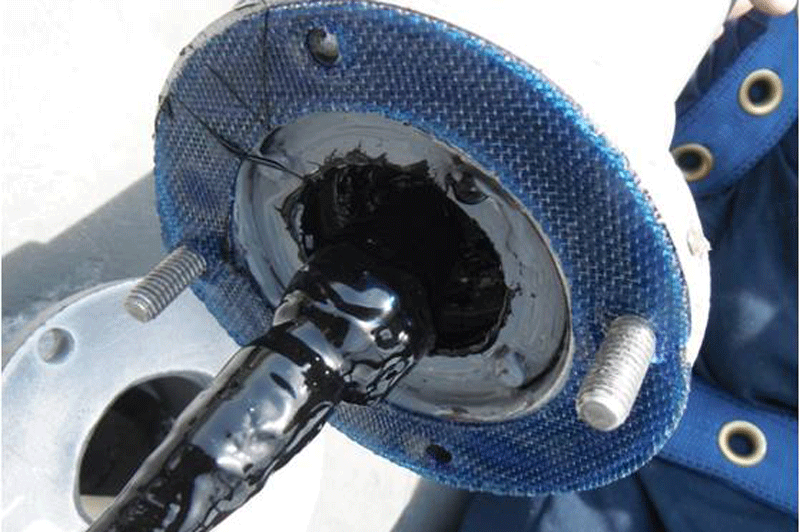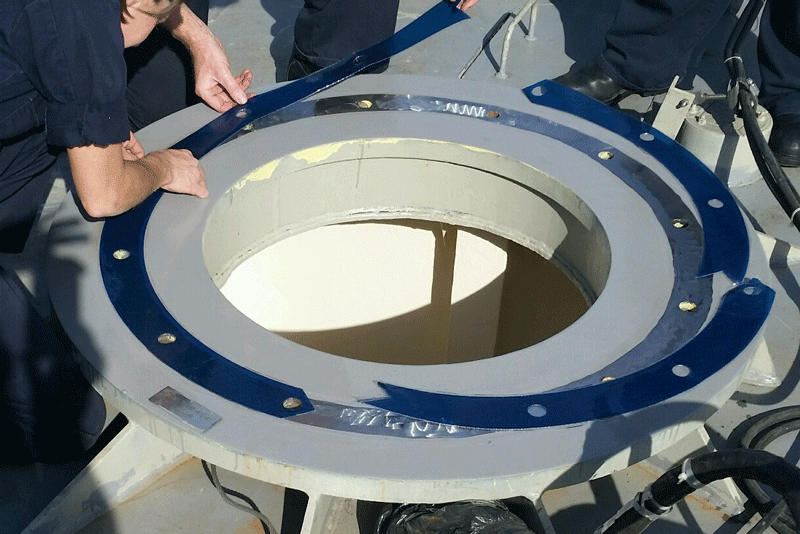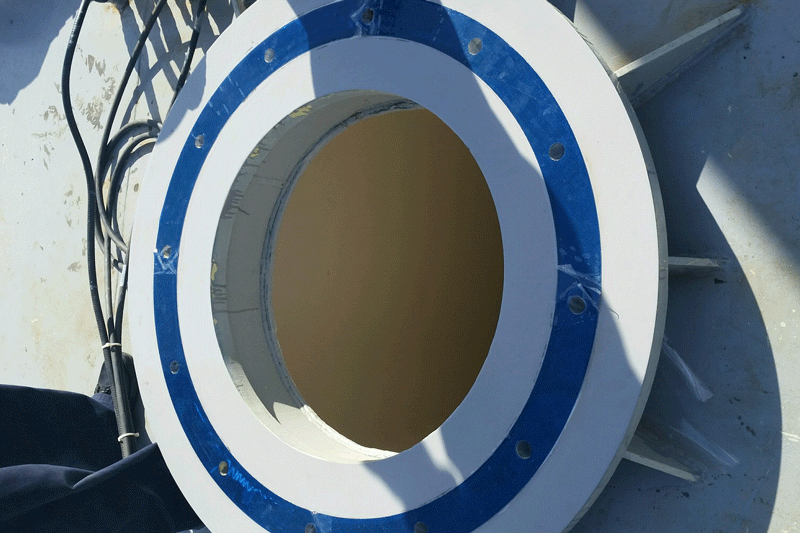The innovative Av‐DEC line of Naval Sea Systems Command (NAVSEA) conductive gaskets provides excellent and reliable sealing solutions for attachment flanges on naval ships. These sealants were developed for the U.S. Navy and are used to prevent corrosion on topside combat systems' attachment flanges while minimizing Electromagnetic Interference (EMI). When applied, Av‐DEC NAVSEA conductive gaskets solve the long-standing problem of corrosion in topside systems and the attendant EMI challenges that inhibit the optimal performance of electronic systems.
The precision-cut gaskets are individually sized to meet different flange size requirements and standards expected from NAVSEA corrosion-prevention solutions. Av‐DEC conductive gasket systems consist of polyurethane sealing gel and a wire mesh or carrier which acts as a ground path for EMI protection. Every application of the conductive gaskets provides the following benefits:



The purpose behind the development of topside combat system conductive gaskets was to solve the corrosion and EMI challenges that naval ships regularly face. Previous sealing systems used by the U.S. Navy have proven less than adequate and often compromise the interface to moisture intrusion.
The corrosion and EMI issues faced by naval ships were exacerbated any time the surfaces of connected flanges were composed of two different materials. The differing metals regularly created galvanic couplings that promoted corrosion induced by natural electron flow away from less noble metals. To eliminate these effects, Av-DEC developed a precision-cut conductive gasket consisting of polyurethane gel and aluminum wire mesh. A two-year study of the gaskets in use on flanges highlighted the following benefits:
The Av-DEC conductive gasket system serves as an excellent corrosion-prevention alternative for diverse marine-related applications across the spectrum of naval, private, and commercial vessels. The conductive gasket can be applied: